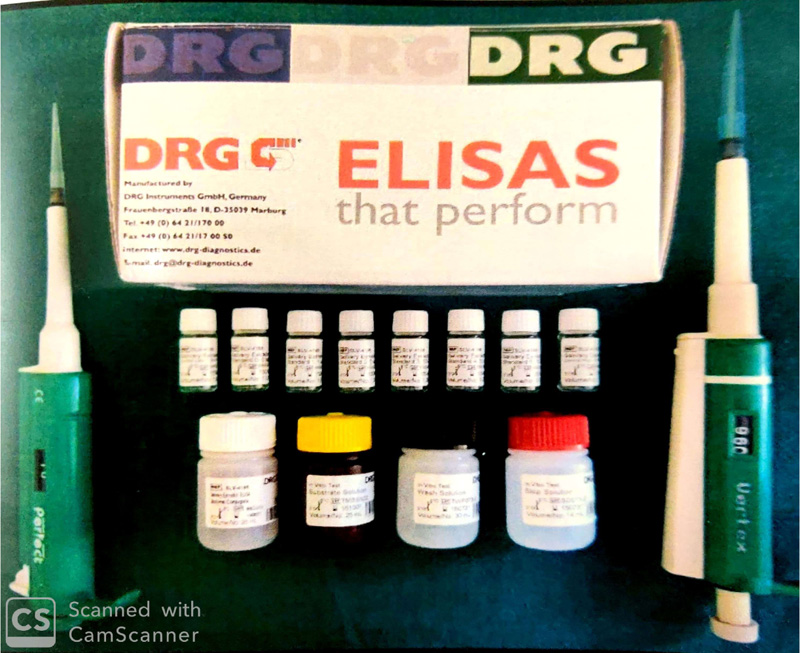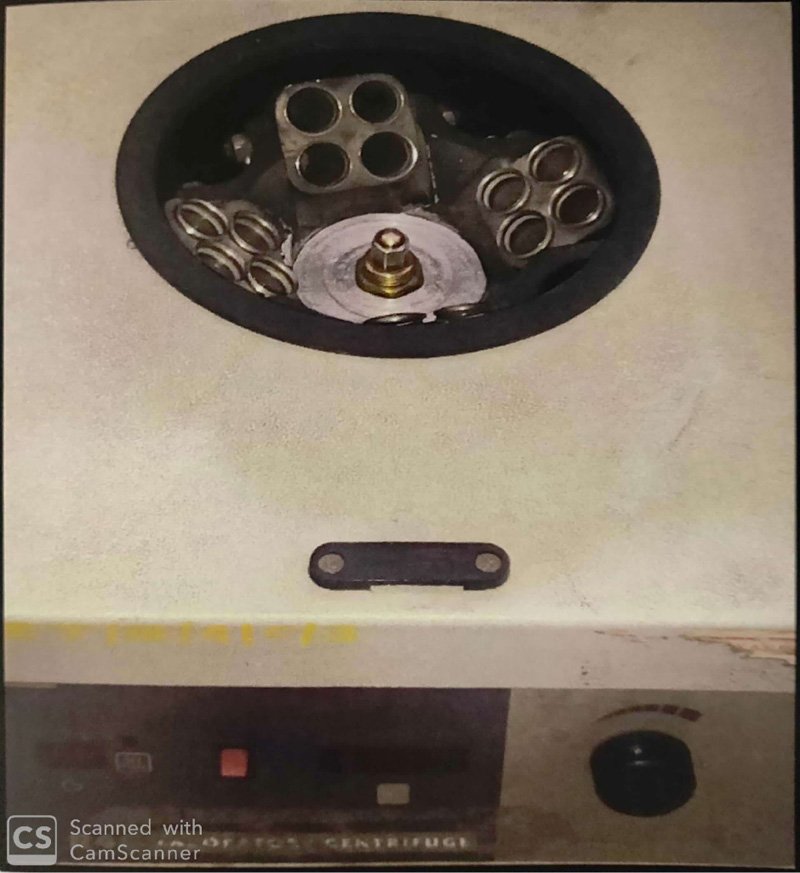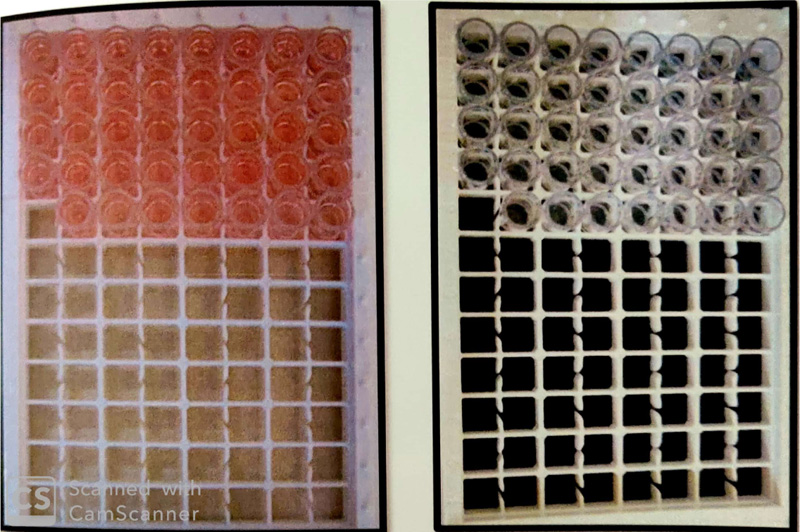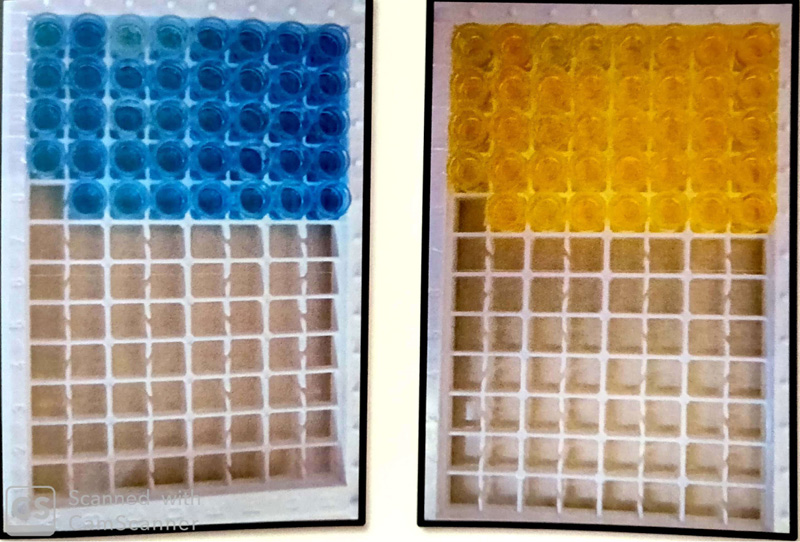All published articles of this journal are available on ScienceDirect.
Unstimulated Salivary Estrogen in Postmenopausal Women With and Without Oral Dryness: A Prospective Study
Abstract
Objective:
This study aimed to compare the unstimulated salivary estrogen levels in postmenopausal women with and without oral dryness.
Methodology:
A study was carried out on 70 selected postmenopausal women, out of which 35 were in the case group and 35 were in the control group. A questionnaire related to oral dryness was given to all the patients to evaluate their response to oral dryness. Patients were asked to spit in a plastic container, and their unstimulated saliva samples were obtained and analyzed for estimation of salivary estrogen levels by ELISA technique. After analyzing the results of salivary estrogen levels, the patients in the case group with low levels of estrogen were subjected to HRT under the guidance of a gynecologist. The patients were followed after 3 months of therapy for their response to oral dryness by the questionnaire, and salivary estrogen levels were again reevaluated after the therapy. The statistical analysis was carried out using Statistical Package for Social Sciences (SPSS Inc, Chicago, IL, version 15.0 for windows). The Pearson’s correlation and Student’s unpaired t-test were used for comparisons.
Results:
Before hormone replacement therapy, the mean estrogen level of the case group was 1.0031, and the mean estrogen level of the control group was 4.0080 pg/ml. This suggested that the reduced levels of estrogen hormone after menopause were associated with the complaint of oral dryness in these females. The mean salivary estrogen levels in the case group after HRT were more than the levels before HRT.
Conclusion:
Estrogen levels were reduced in patients with oral dryness. Further, the patients receiving HRT showed significant improvement in symptoms of oral dryness.
1. INTRODUCTION
Menopause is a physiological process typically occurring in the fifth decade of life in women and involves permanent cessation of menstruation [1]. Life expectancy in females has increased significantly during the last decade; therefore, it can be assumed that women generally live about one-third of their life beyond menopause [2]. Many physiological changes take place in women approaching menopause, most of which are due to decreased ovarian estrogen production [3].
Estrogen deficiency may cause several problems such as hot flushes, sweating, osteoporosis, cardiovascular diseases, cognitive changes, urogenital infections, and skin changes [4]. However, oral symptoms can also be seen in addition to general manifestations, which include xerostomia, burning mouth, taste alterations, atrophic gingivitis, and gingivos-tomatitis [5].
Saliva plays an important role in maintaining the homeostasis of the oral cavity. A reduction in saliva production may cause a burning sensation in the mouth, changes in taste perception, and difficulties in swallowing and speech [6]. The feeling of oral dryness (OD) or xerostomia is a major complaint of many elderly individuals. It is a subjective sensation and does not reflect dry mouth in up to one-third of cases [7]. This complaint is more prevalent in menopausal women on medication and is quite common in those without disease or drug usage, unrelated to lowered salivary flow rates [8].
Sex steroid hormones, especially estrogen, appear to play a significant role in the physiology of the oral cavity. The decrease in estrogen levels during menopause affects the oral epithelial maturation process, leading to thin and atrophic epithelium [9]. It has been shown that hormone replacement therapy (HRT) can reduce oral discomfort in postmenopausal women, further suggesting a role of female sex hormones in the maintenance of oral tissues [10-12].
Henceforth, the present study aims to compare the unstimulated salivary estrogen levels in postmenopausal women with and without oral dryness and to evaluate the efficacy of hormone replacement therapy in relieving oral symptoms in postmenopausal women with a complaint of oral dryness.
2. MATERIALS AND METHODS
The present clinical study was undertaken in the Department of Oral Medicine and Radiology of Maharishi Markandeshwar College of Dental Sciences and Research, Department of Biochemistry and Department of Obstetrics & Gynaecology of M.M. College of Medical Sciences and Research, Mullana, after obtaining the ethical clearance from Research and Review Committee and the Institutional Ethical Committee MMU Mullana with number MMDC/13/395(44).
In this clinical study, postmenopausal women who reported to the Department of Obstetrics & Gynaecology with complaints such as hot flushes, palpitations, vaginal dryness, and those who were prescribed HRT by the gynecologist were evaluated for oral dryness through a questionnaire. Patients who responded with YES to at least one of the questions regarding oral dryness were recruited in the study. Thirty-five such patients comprised the case group. An equal number, i.e., 35 patients, were enrolled in the control group. They comprised of postmenopausal women who reported to the general outpatient department of Oral Medicine and Radiology and responded with NO to all the questions in the questionnaire and had no general symptoms.
Written informed consent was obtained, along with a detailed case history of the participants. The inclusion criterion was: postmenopausal women in whom a menstrual cycle had not occurred for at least 24 months and women that had not taken hormone replacement therapy for the previous 6 months. Patients with systemic diseases and oral lesions were excluded from this study.
A questionnaire comprising of 10 questions was prepared with a list of symptoms related to xerostomia (Table 1). A total of 35 patients who responded with YES to at least one of the questions related to xerostomia with a minimum 6 months duration of oral dryness formed the case group. A total of 35 patients responded with NO to all the questions related to xerostomia and were asymptomatic for at least 6 months.
| 1. Does your mouth feel dry when eating a meal? |
| 2. Do you have difficulty swallowing any foods? |
| 3. Do you need to sip liquids to help you swallow dry foods? |
| 4. Does the amount of saliva in your mouth seem to be reduced most of the time? |
| 5. Does your mouth feel dry at night or when you wake up? |
| 6. Does your mouth feel dry during the daytime? |
| 7. Do you chew gum or use candy to relieve oral dryness? |
| 8. Do you usually wake up thirsty at night? |
| 9. Do you have problems tasting food? |
| 10. Does your tongue burn? |
| Response options: Yes, No |
2.1. Saliva Collection
Unstimulated saliva was collected using a spit technique. The subject was advised to rinse her mouth with distilled water and then relax for five minutes. The patient was asked to sit in the dental chair with her head tilted forward into the plastic container. She was instructed not to speak, swallow or perform any head movements during the procedure and swallow any saliva if present in the mouth before starting the procedure. The patient was asked to keep her mouth slightly open and allow saliva to drain into the plastic container (Fig. 1). At the end of the collection period, the patient was instructed to collect all the saliva in the mouth and spit it out into the plastic container. The samples were immediately stored at minus 20 degrees Celsius. Salivary estrogen levels were assessed by ELISA technology using the DRG Salivary Estradiol kit (Fig. 2).


2.2. Specimen Preparation
Prior to assaying, the samples were warmed up to room temperature. Then the samples were centrifuged (Fig. 3) for 5 to 10 minutes, and the clear colorless supernatant was easy to pipette.
2.3. Saliva Analysis Procedure
All the reagents were brought to room temperature and mixed without foaming. 100 µl each of standard, control, and saliva samples were dispensed into appropriate wells and were incubated at room temperature for 30 minutes. 200 µl of enzyme conjugate was dispensed into each sample and standard well and mixed for 10 seconds and incubated for 120 minutes. The wells were shaken to empty contents, and wells were rinsed with a diluted wash solution (Fig. 4). 200 µl of substrate solution was added to each well and incubated for 30 minutes and then stop solution was added to stop the enzymatic reaction (Fig. 5). The reading was taken within 10 minutes after adding the stop solution (Fig. 6). The normal value for salivary estradiol is 0.5- 4.39pg/ml.




2.4. Gynecological Examination
After analyzing the results of salivary estrogen levels in the case group with oral dryness, these patients were subjected to hormone replacement therapy by the gynecologist. Before giving therapy, patients were screened for breast cancer and cervical cancer by performing a breast examination and cervical pap smear investigation.
After assessing the results of investigations, patients were given therapy under the guidance of a gynecologist, which comprised of conjugated equine estrogen (Premarin 0.625mg) and progesterone (Modus 10mg). Follow up of these patients was done after 3 months. After 3 months, salivary estrogen levels were reevaluated with the same method, and oral dryness feeling was also reevaluated through a questionnaire.
2.5. Statistical Analysis
The statistical analysis was carried out using Statistical Package for Social Sciences (SPSS Inc, Chicago, IL, version 15.0 for windows). Following this, descriptive statistics, including the mean values and standard deviations, were calculated for each variable. The Student’s unpaired “t”-test was used to determine whether a significant difference exists between the means of two sets of observations (case and control group). The Pearson’s correlation was used to check whether a correlation existed between salivary estrogen levels in cases and controls and whether a significant correlation existed in cases with and without hormone replacement therapy. P< 0.05 was considered to be statistically significant.
3. RESULTS
The mean age of the case group was 56.17 years, and the mean age of the control group was 50.83 years. The p-value was less than 0.001, which shows a highly significant difference in the mean ages of both the groups evaluated (Table 2).
The mean estrogen level of the case group was 1.0031, and the mean estrogen level of the control group was 4.0080 pg/ml. The p-value was less than 0.001, which shows a highly significant difference in the mean estrogen levels of both the groups evaluated (Table 3).
| Group | Mean Age | N | Standard Deviation | Minimum | Maximum |
|---|---|---|---|---|---|
| Case Group | 56.17 | 35 | 5.659 | 48 | 70 |
| Control Group | 50.83 | 35 | 2.431 | 46 | 58 |
| Total | 53.50 | 70 | 5.093 | 46 | 70 |
| Group | N | Mean Estrogen Levels | Standard Deviation | Minimum | Maximum |
|---|---|---|---|---|---|
| Case Group | 35 | 1.0031 | 0.42184 | 0.24 | 1.81 |
| Control Group | 35 | 4.0080 | 1.41490 | 2.14 | 6.23 |
The mean estrogen level of the case group before HRT was 1.0031, and the mean estrogen level of the case group after HRT was 2.168 pg/ml. The p-value was less than 0.001, which shows a highly significant difference in the mean estrogen levels of both the groups evaluated (Table 4).
| Case group | N | Mean | Standard deviation | Minimum | Maximum |
|---|---|---|---|---|---|
| Before HRT | 35 | 1.0031 | 0.42184 | 0.24 | 1.81 |
| After HRT | 35 | 2.168 | 0.9739 | 0.56 | 3.75 |
The response to questions 1, 3, 4, 5, 6, before and after hormone replacement therapy was highly significant with a p-value less than 0.001. The response to questions 2 and 8 was not statistically significant, with a p-value of more than 0.001. The response to questions 7, 9, 10 was not statistically evaluated as patients did not respond to these questions (Table 5).
| Question | Cases who give YES response to questions before HRT | Cases who showed improvement after HRT and say no to questions | Cases who showed no improvement after HRT and say yes again to questions | P-value |
|---|---|---|---|---|
| 1. Does your mouth feel dry when eating a meal? | 25 | 14 | 11 | .001 |
| 2. Do you have difficulty swallowing any foods? | 10 | 04 | 06 | .125 |
| 3. Do you need to sip liquids to help you swallow dry foods? | 20 | 10 | 10 | .004 |
| 4. Does the amount of saliva in your mouth seem to be reduced most of the time? | 25 | 12 | 13 | .001 |
| 5. Does your mouth feel dry at night or when you wake up? | 35 | 16 | 19 | .001 |
| 6. Does your mouth feel dry during the daytime? | 25 | 11 | 14 | .001 |
| 7. Do you chew gum or use candy to relieve oral dryness? | 0 | 0 | 0 | - |
| 8. Do you usually wake up thirsty at night? | 16 | 02 | 14 | .500 |
| 9. Do you have problems tasting food? | 0 | 0 | 0 | - |
| 10. Does your tongue burn? | 0 | 0 | 0 | - |
4. DISCUSSION
According to WHO in 2010 [12], there exists a concrete relationship between oral and general health. However, the majority of pain and discomfort in the oral cavity is attributed to diseases of the mouth. There are situations where oral symptoms are a consequence of systemic diseases or systemic alterations in physiological conditions. Menopause is one such systemic physiological condition that can lead to certain oral manifestations. Wardrop et al. in 1989 [13] studied the relationship between oral discomfort and menopause. It was revealed that the prevalence of oral discomfort was significantly higher in perimenopausal and postmenopausal women than in premenopausal women.
Moreover, sex steroid hormones appear to play a significant role in the physiology of the human oral cavity. The immunohistochemical studies performed by Valimaa et al. in 2004 [14] had shown the location of estrogen receptors in oral mucosa, gingiva, and salivary glands. They demonstrated the expression of ERB subtype within the oral epithelium and suggested a direct physiological role of estrogen receptors in oral mucosa and salivary glands [15]. Furthermore, it is a well-known fact that saliva is essential for maintaining good oral and general health. Hence, its deficiency or absence can cause significant morbidity and lead to impaired quality of life [16]. In menopausal women, the composition of saliva and reduced salivary flow seem to be estrogen-dependent, as suggested by Leimola-Virtanen et al. in 1997 [17].
It is a well-known fact that xerostomia is a subjective feeling, not a distinct disease. It is not a synonym for hyposalivation since it may also occur with the changes in the quality of saliva, while the amount of saliva remains unchanged. Prevalence studies of xerostomia are difficult because of the heterogeneity of the patients. Also, there are no standardized questions for diagnosing xerostomia [18]. Xerostomia has various causes, and this symptom is often associated with an unpleasant feeling and other symptoms in the mouth and throat, as suggested by Nederfors in 2000 [19]. As there is no doubt regarding the fact that xerostomia impairs the quality of life of the patient and causes oral complications, it becomes important to recognize and distinguish between patients with subjective complaints and those who have evidence of salivary hypofunction due to some underlying systemic disease, to manage their condition appropriately suggested by Napenas et al. in 2009 [20].
As already discussed, deficiency of estrogen in postmenopausal females is a contributory factor in oral discomfort. In order to alleviate this problem, hormone replacement therapy can be instituted for these females. The fact that HRT helps relieve oral symptoms in postmenopausal females has already been proven by several authors. It has been reported in the literature that HRT is given in the form of estrogen in postmenopausal females. Yalcin et al. in 2006 [21], in a 2-year clinical follow-up study on Turkish women, observed that self-assessed sensation of dry mouth was significantly less frequent among hormone users than non-users. Eliasson et al. in 2003 [22] investigated the flow rate from minor salivary glands and the secretion rate and buffer capacity of the whole saliva in 18 postmenopausal women (61-76 years) prior to and during one year of low potency estrogen use, i.e., estriol (E3). HRT caused a significant increase in salivary flow, and complaints of dry mouth were decreased after the therapy.
Henceforth, this present study aimed to compare the unstimulated salivary estrogen levels in postmenopausal women with and without oral dryness. The mean age was in accordance with the patients taken in previous studies by Yalcin et al. in 2006 [21] and F. Agha-Hosseini et al. in 2009 [9]. The mean age of both the case and the control group had a highly significant correlation with a p-value of less than 0.001. This suggested that the prevalence of oral dryness was significantly increased by the duration of menopause [21, 23].
In the present study, xerostomia, being a subjective sensation of dry mouth, was evaluated with the help of a questionnaire comprising of 10 questions. This questionnaire had already been used by various authors in previous studies [9, 10, 24]. Saliva was used to assess the estrogen levels in this study as saliva analysis is useful for evaluating physiological and pathological conditions in humans in the fields of medicine and dentistry. The use of saliva has many advantages as samples are painless, easily obtainable, non-invasive, and can remain stable at room temperature for extended periods. Further, the hazards associated with blood collection do not apply to saliva [16].According to Hofman in 2001, the steroid hormones detected in the saliva reflect the free hormone concentration in the blood, which is not bound to proteins. Therefore, saliva levels are a more accurate reflection of the active hormone in the body, which is strongly bound in blood by specific binding globulins. Because of diurnal and monthly variations, several steroid hormones need multiple samples collected early in the morning or late at night or at the same time every day for a month to give meaningful results, which is impossible with the blood samples [16].
In this study, patients with oral dryness in the case group had lower estrogen levels, and patients without oral dryness in the control group had normal estrogen levels. These findings suggested a highly statistically significant correlation between the mean salivary estrogen levels in the case group and the control group. Henceforth, it can be said that the reduced levels of estrogen hormone after menopause were associated with the complaint of oral dryness in these females. These results were in accordance with other pieces of research conducted by various authors like F Agha Hosseini in 2009 [9] and F Agha Hosseini in 2011 [10].
In this study, patients with a complaint of oral dryness underwent HRT comprising of conjugated equine estrogen (0.625 mg). This similar drug was used by many authors (Jean Yves Reginster et al. in 1992 [25], A. Forabosco et al. in 1992 [26]). The mean salivary estrogen levels in the case group before and after hormone replacement therapy had a highly statistically significant difference with a p-value of less than 0.001, suggesting that patients with oral dryness showed improvement after hormone replacement therapy.
The improvement in subjective symptoms was in accordance with studies carried out by Wardrop et al. in 1989 [13]. They concluded that approximately two-thirds of the menopausal women with oral discomfort were relieved with the use of HRT. Forabosco et al. in 1992 [26] suggested that oral discomfort may be related to steroid hormone withdrawal only in some postmenopausal women and that HRT may improve the clinical and cytological features only in those patients in which estrogen receptors were present. Volpe et al. in 1991 [27] suggested that estrogen deficiency can be considered as a possible cause of oral discomfort in some postmenopausal patients, and HRT may improve the subjective symptoms of these patients. A questionnaire study by Jansson et al. in 2003 [23] observed more frequent xerostomia among postmenopausal women who did not use HRT than in women using HRT or in premenopausal women of the same age.
Based on the above findings, it has been proved that there is a negative correlation between the feeling of oral dryness and salivary estrogen levels in postmenopausal females. In the present study, nighttime xerostomia or dryness at night or after waking up was the problem seen in all the patients as salivary output typically reaches its lowest circadian levels during sleep, and the problem may be exacerbated by mouth breathing [28]. The sensation of dry mouth is related to mucosal dehydration, and since saliva does not necessarily wet the whole mouth uniformly, it is possible that even in the presence of a significant overall salivary flow, localized areas of dryness could trigger the sensation of dry mouth [8]. In the present study, subjective symptoms were improved in some patients after replacement with hormones, and salivary estrogen levels were also increased in some postmenopausal females.The presence of estrogen receptors has been established at the oral epithelial level in most patients who respond to replacement therapy, while patients failing to derive benefit from such therapy lacked estrogen receptors. Valimaa et al. already proved this fact in 2004 [14]. This observation implies that the identification of estrogen receptors in the oral mucosa may contribute to selecting those patients capable of deriving benefits from hormone treatment. A close correlation between the benefits of HRT and the presence of estrogen receptors in the oral mucosa may explain the diversity of response among postmenopausal patients and the discordant results among authors [26].
CONCLUSION
It was concluded that the reduced levels of estrogen hormone after menopause were associated with the complaint of oral dryness in postmenopausal females. Further, the patients with oral dryness showed improvement after hormone replacement therapy. The present study showed that all the postmenopausal women who were given therapy did not benefit from HRT; rather, a significant number of these showed improvement in their subjective symptoms. These results have further proved the findings of previous studies, according to which a close correlation exists between the benefits of HRT and the presence of estrogen receptors in the oral mucosa. This study can be carried out with a longer duration of follow-up to review the relapse of symptoms in postmenopausal women (longitudinal study). The limitation of this study was that the follow-up period was of a shorter duration.
ETHICS APPROVAL AND CONSENT TO PARTICIPATE
Ethical clearance was obtained from Research and Review Committee and the Institutional Ethical Committee MMU Mullana with number MMDC/13/395(44).
HUMAN AND ANIMAL RIGHTS
No animals were used in this study. The reported experiments on humans are in accordance with the Helsinki Declaration of 1975, as revised in 2013.
CONSENT FOR PUBLICATION
Written informed consent was obtained, along with a detailed case history of the participants.
STANDARDS OF REPORTING
STROBE guidelines were followed.
AVAILABILITY OF DATA AND MATERIALS
The data are available from the corresponding author [D.G.] on request.
FUNDING
None.
CONFLICT OF INTEREST
The authors declare no conflict of interest, financial or otherwise.
ACKNOWLEDGEMENTS
We would like to acknowledge the help of Late Dr. Soheyl Sheikh, who helped in framing the design of the manuscript. We would also like to acknowledge the help of Dr. Preeti Garg, Dept of Oral Medicine and Radiology, M.M. College of Dental Sciences and Research, Mullana, who helped in drafting and revision of the manuscript.


